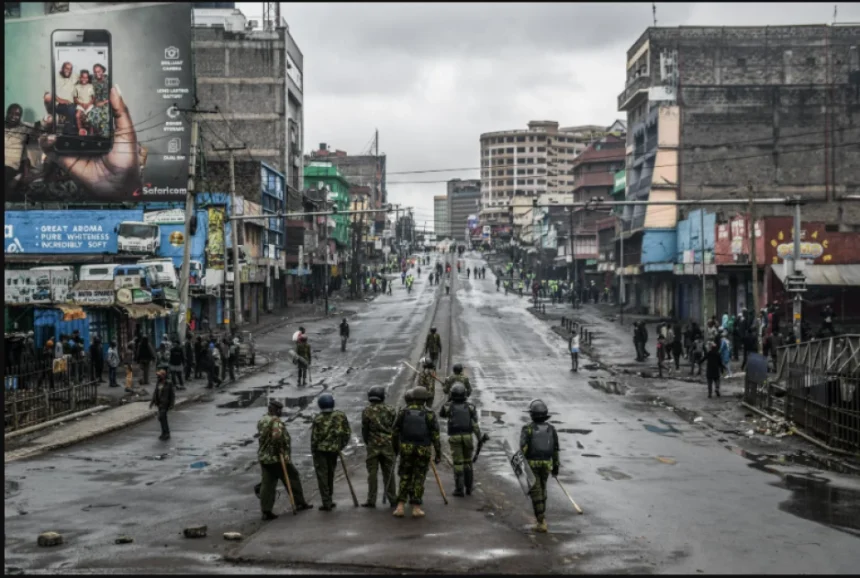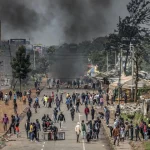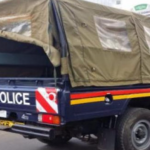Eyewitness videos and circulating footage from across Nairobi and Kajiado counties have captured the chilling presence of a heavily armed, unmarked convoy that descended on several protest hotspots during Monday’s Saba Saba demonstrations, raising fresh concerns over police accountability and the use of excessive force.
Phone camera footage from Kiserian, a town in Kajiado North, showed a fleet of at least ten high-performance vehicles—predominantly Subaru Outback models—moving in tight formation.
The convoy, which appeared to be under coordinated command, was composed of masked individuals wearing balaclavas and carrying high-caliber firearms with full magazine carriers, prepared for combat.
Additional footage from Ngong town showed the group unleashing live fire, with gunshots ringing out before lifeless bodies were seen lying on the road.
The group, operating with military-style precision, appeared unmistakably lethal. In one clip, a figure—unarmed and giving instructions—seemed to command the squad, reinforcing the impression of a chain of command within the unit.
Across the city and outlying towns, multiple casualties were reported in the wake of their operations: two people were confirmed dead in Kangemi, three in Ngong, one in Kitengela, one in Kamukunji, and two others along Jogoo Road. Despite being heavily armed, the squad showed little intent to carry out arrests.
Only one instance was documented in which two suspects were violently subdued, beaten, and bundled into one of the vehicles.
What alarmed many observers was the resemblance of this masked squad to the controversial rapid response teams deployed during the anti-government protests of June 2024 in Mlolongo, Syokimau, Embakasi, and Kitengela—units then accused of unlawful killings and brutal crackdowns.
While the National Police Service has yet to confirm or deny the identity of the squad, the lack of insignia, use of unmarked vehicles, and masked operatives suggest a deliberate attempt to obscure accountability. Calls for investigations into potential extra-judicial killings are already mounting.
Across Nairobi, the scale of security deployment was unprecedented. The capital was transformed into a virtual fortress. Armored Personnel Carriers roamed the streets, helicopters hovered overhead, and anti-riot police flooded nearly every intersection. Barricades, batons, and boots on the ground reflected the government’s determination to stamp out any repeat of the June 25 protests, during which demonstrators briefly overwhelmed security forces.
Meanwhile, daily life was brought to a standstill.
Schools, especially public day primary and secondary institutions, suspended learning due to safety concerns. Businesses remained shuttered across multiple urban centers, and transport disruptions left thousands stranded.



